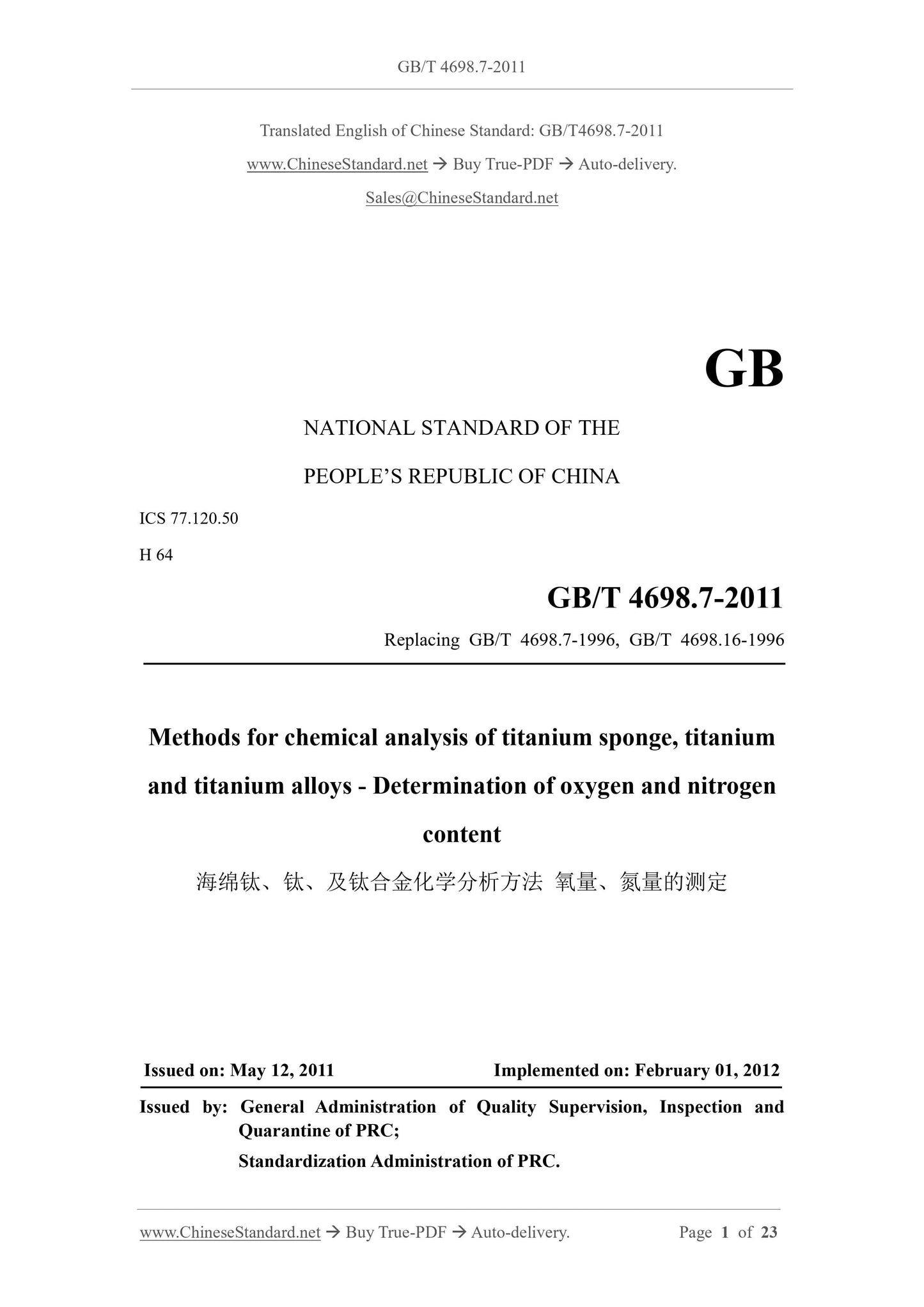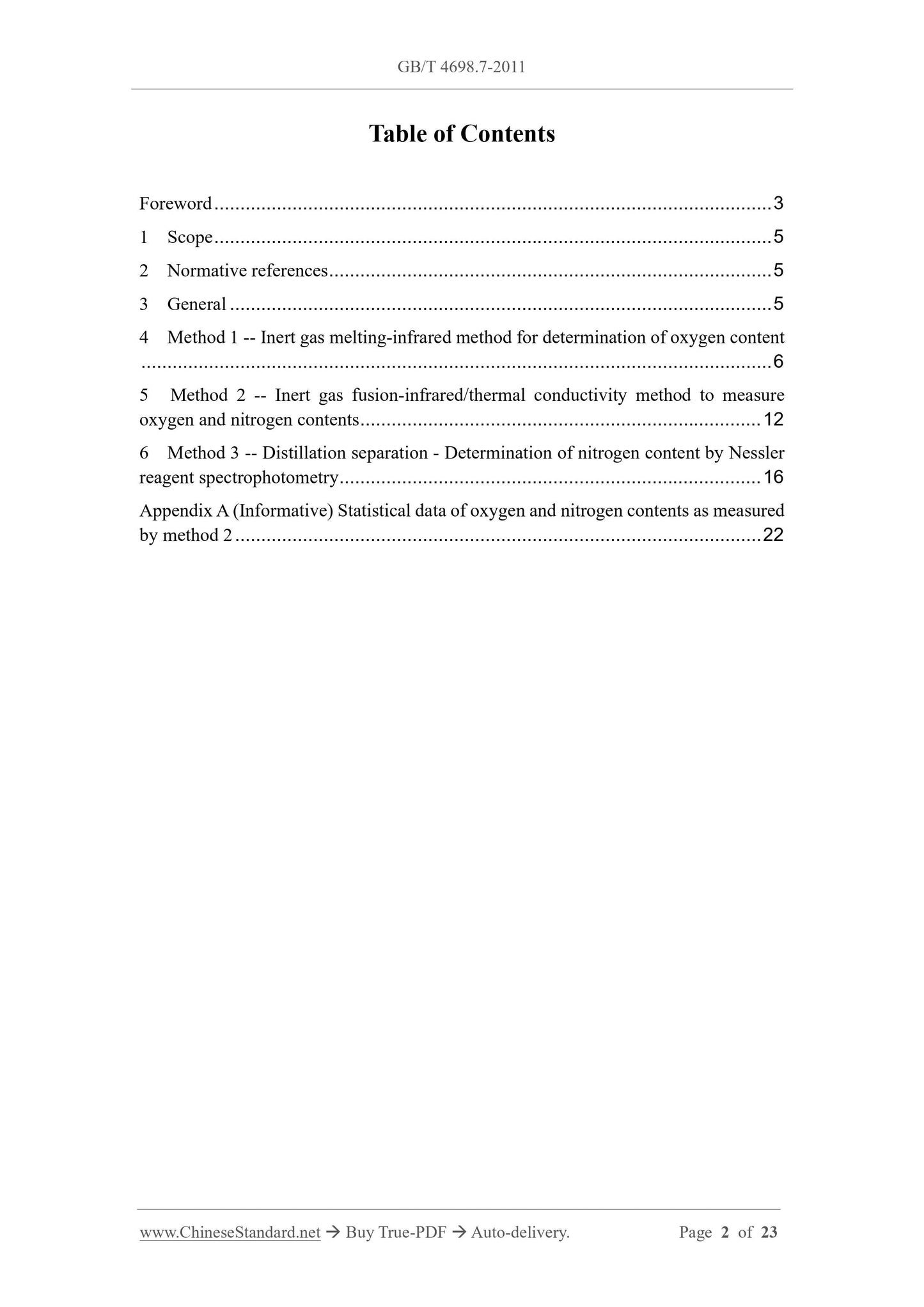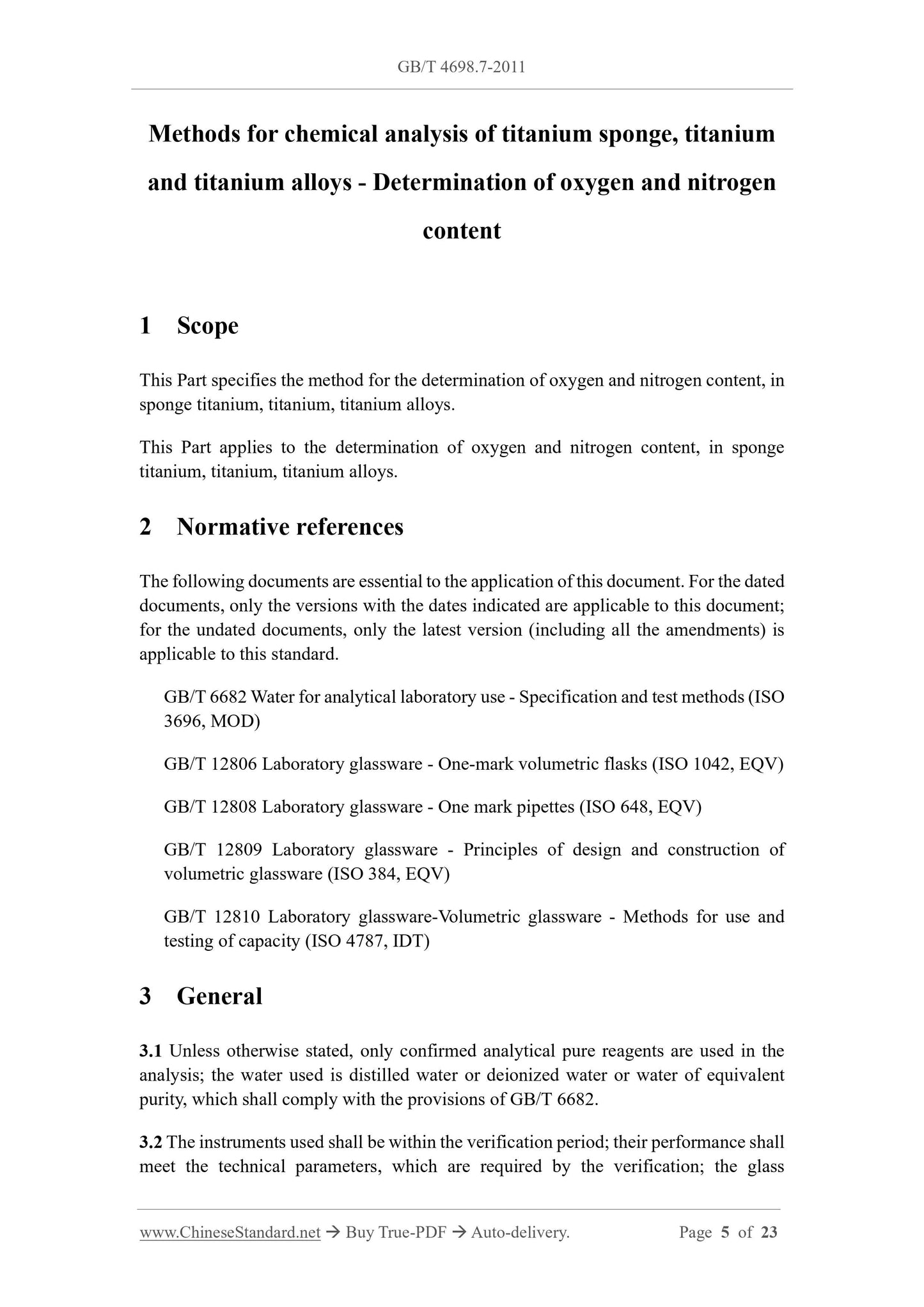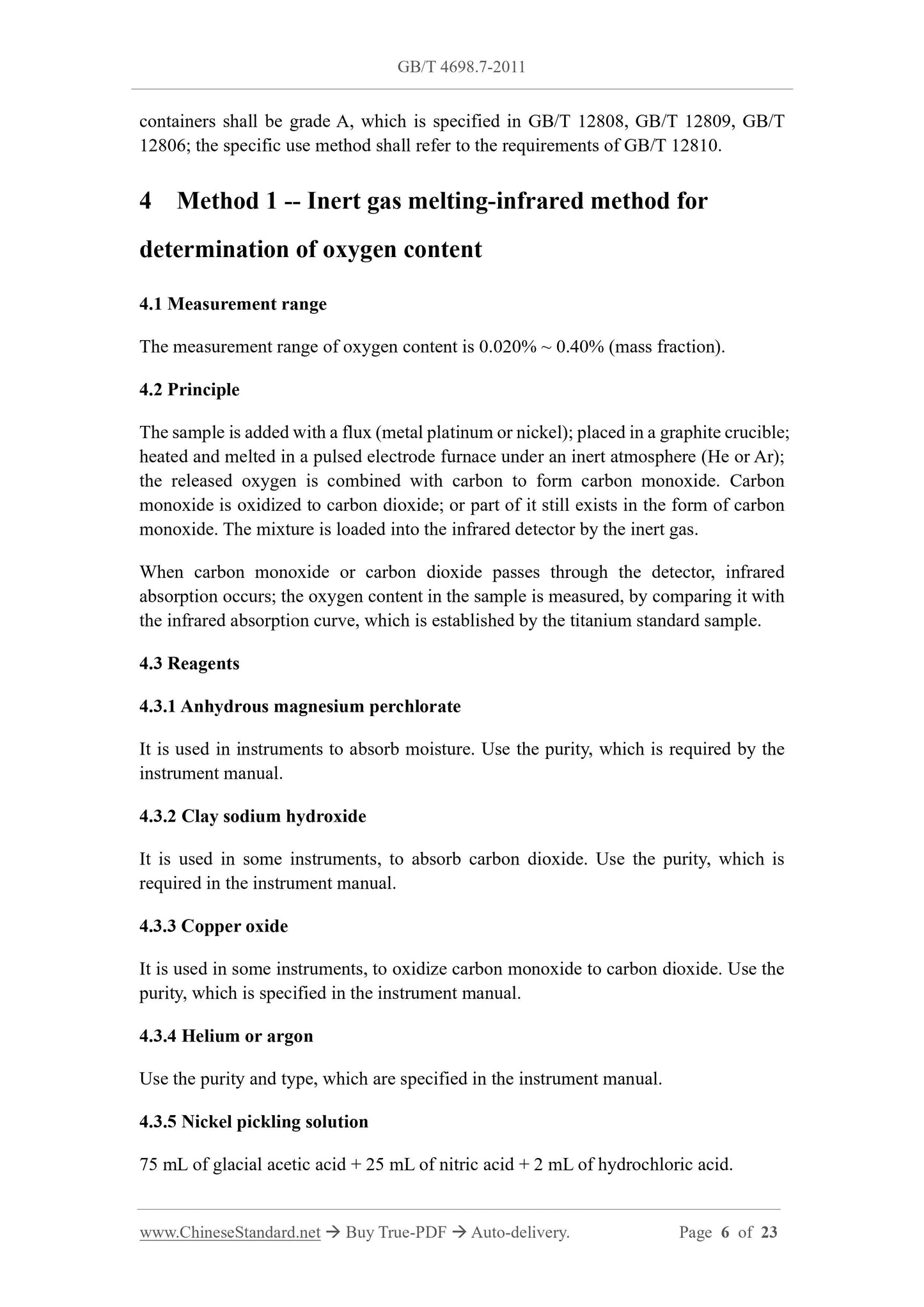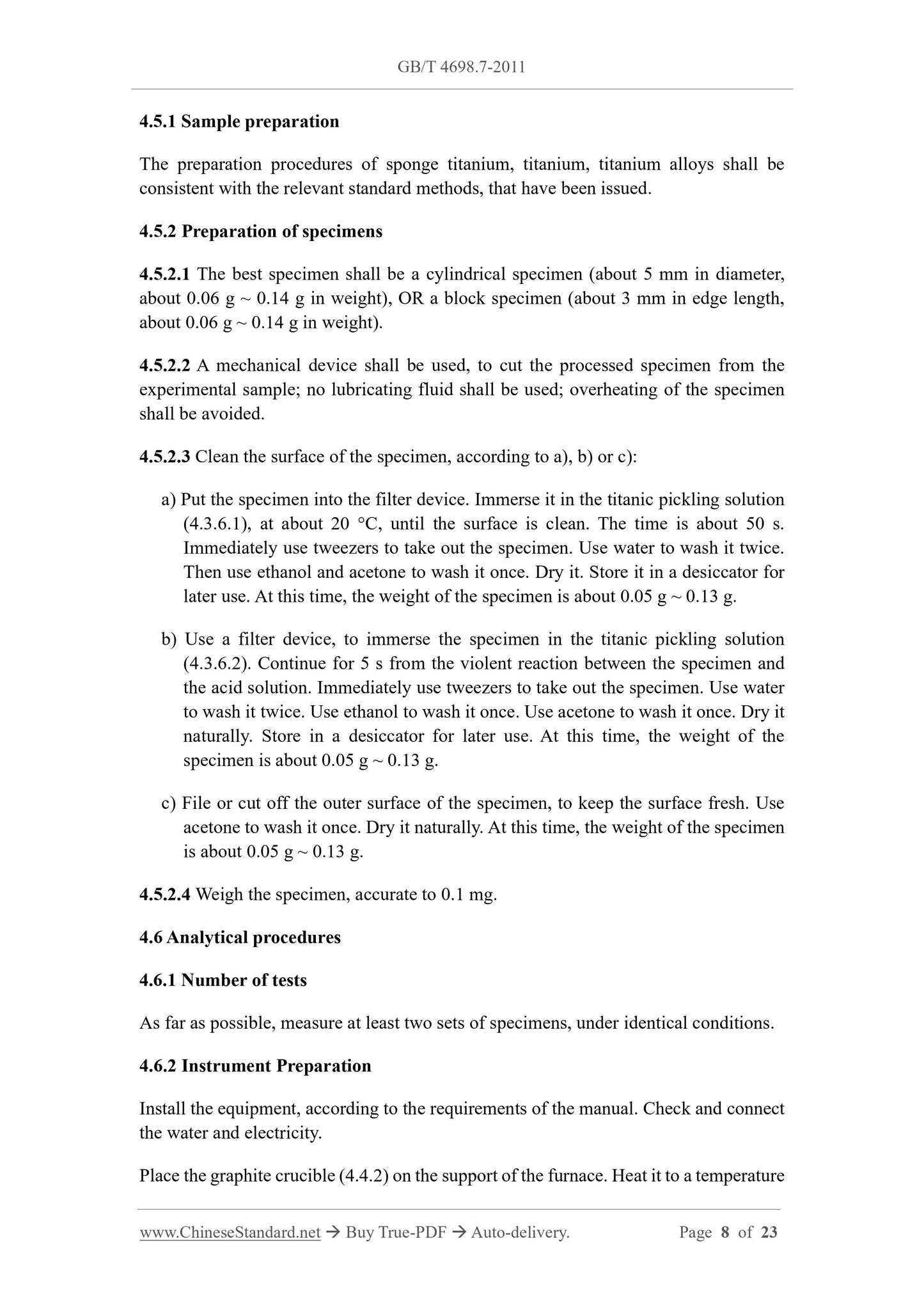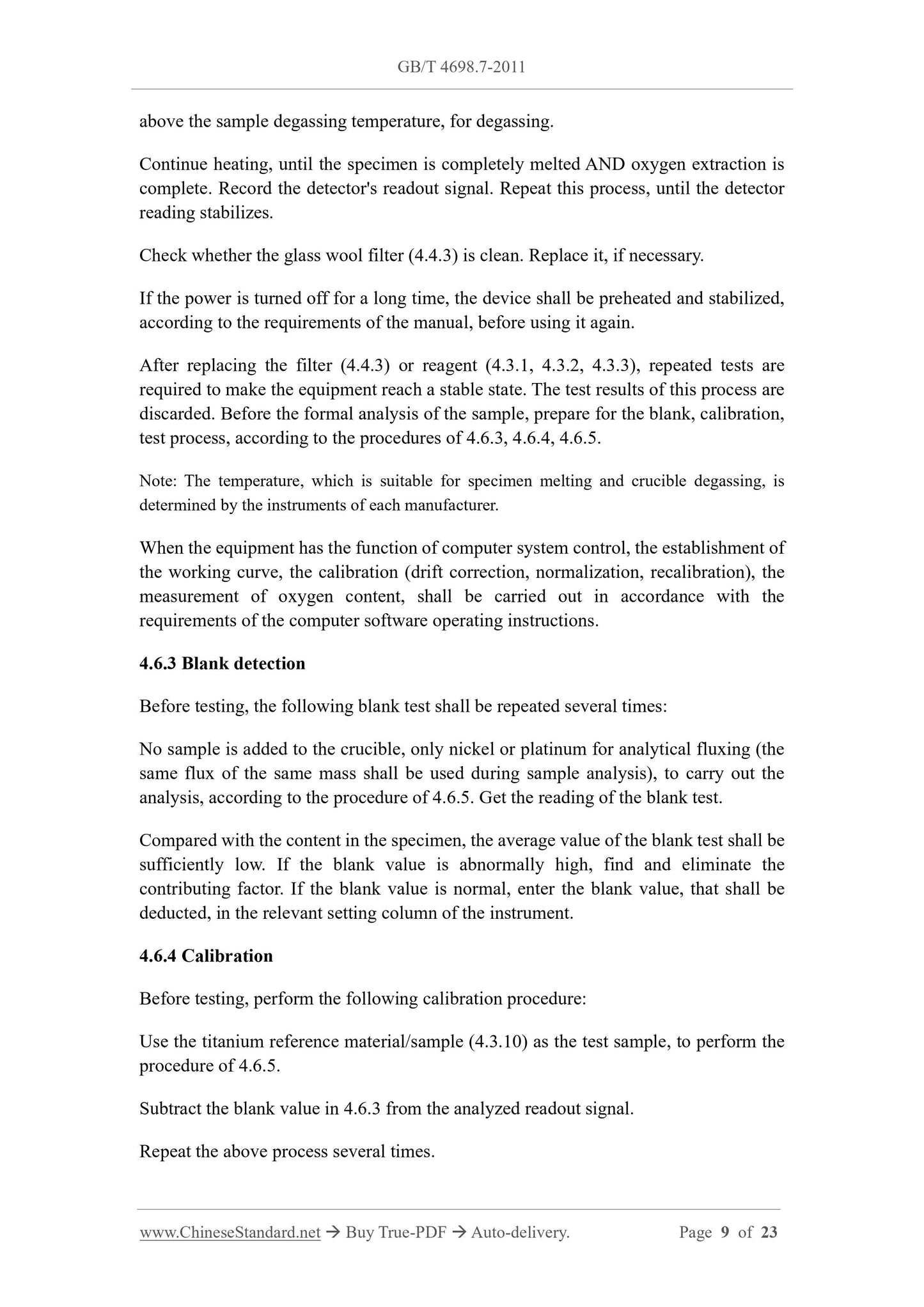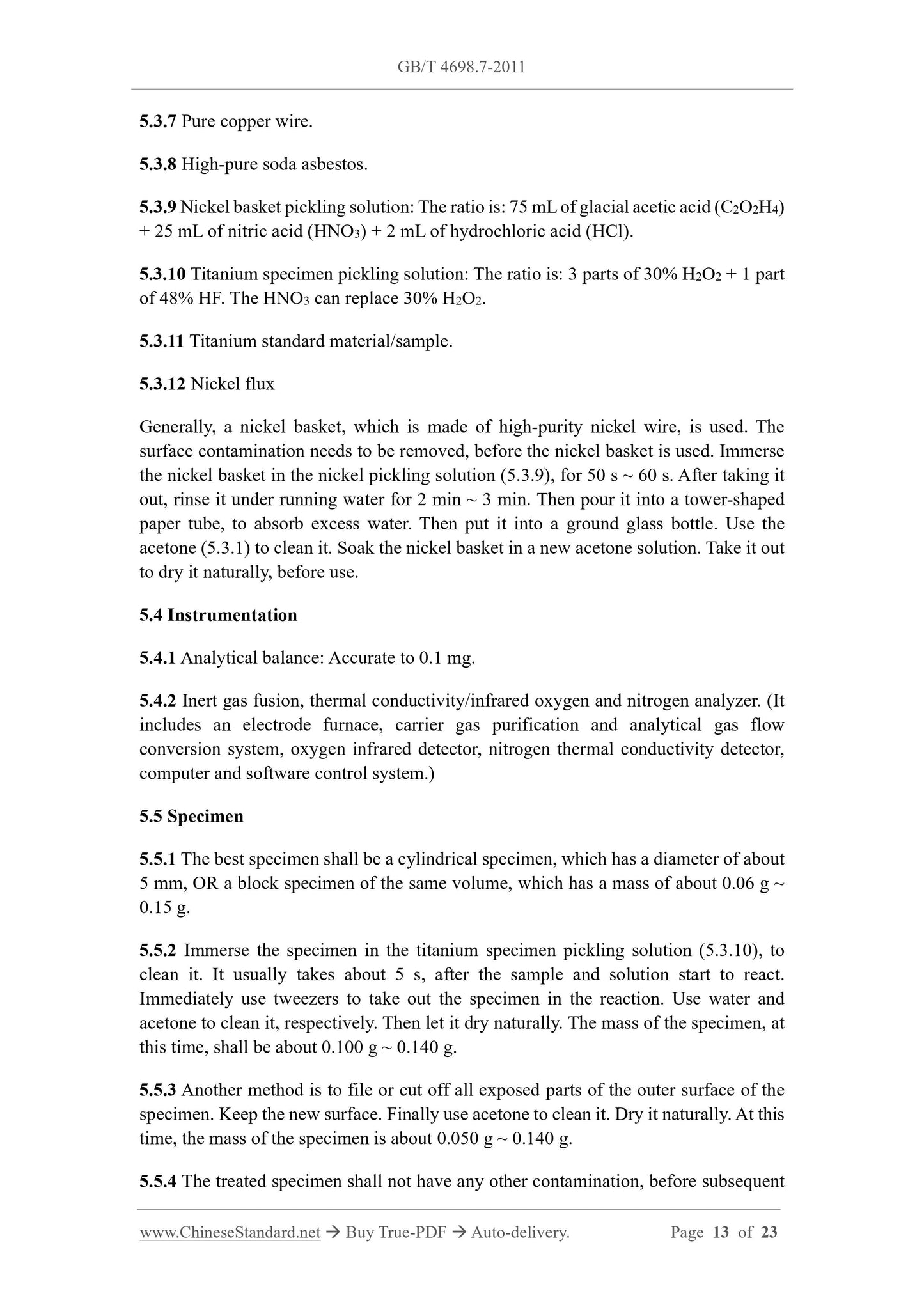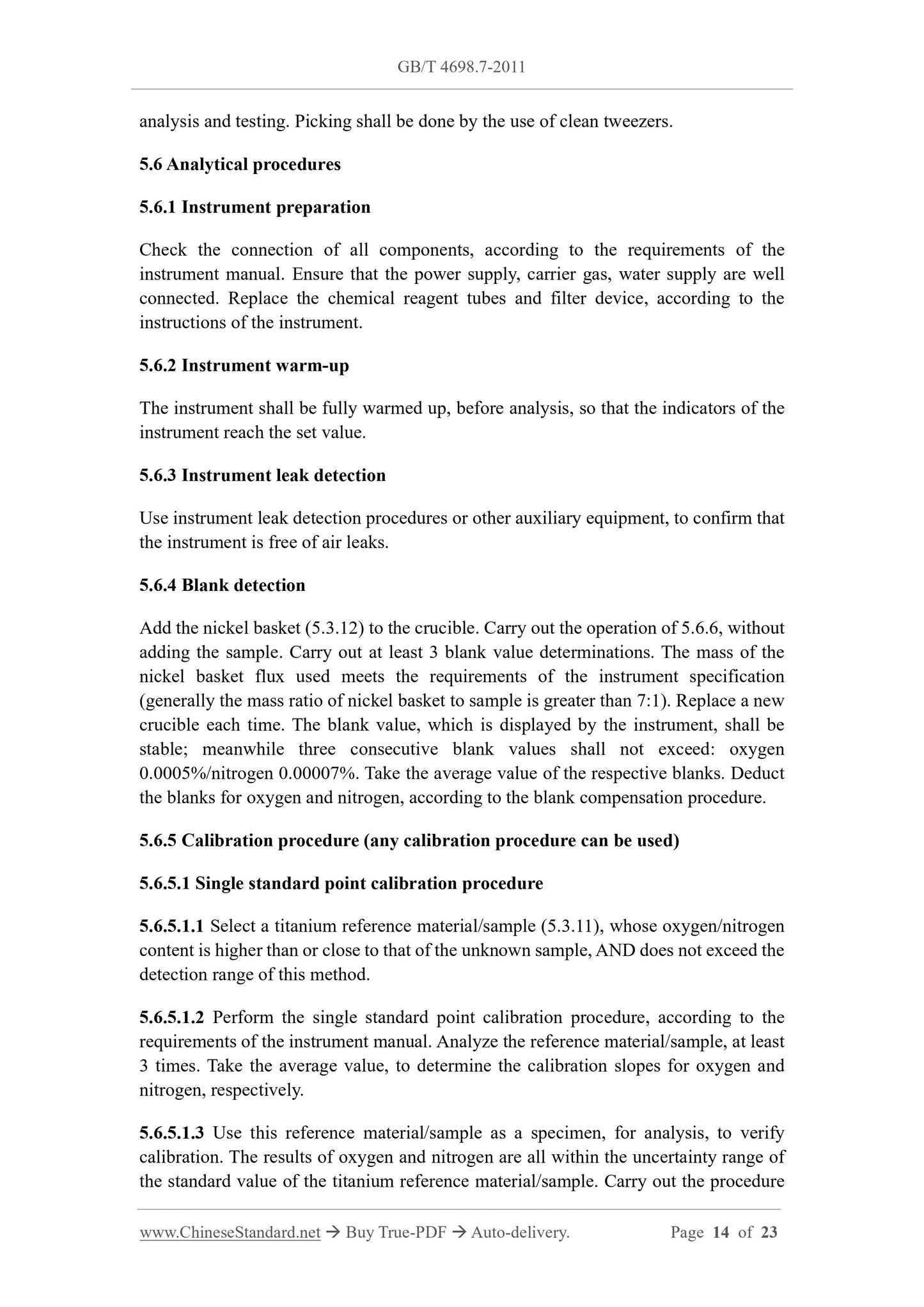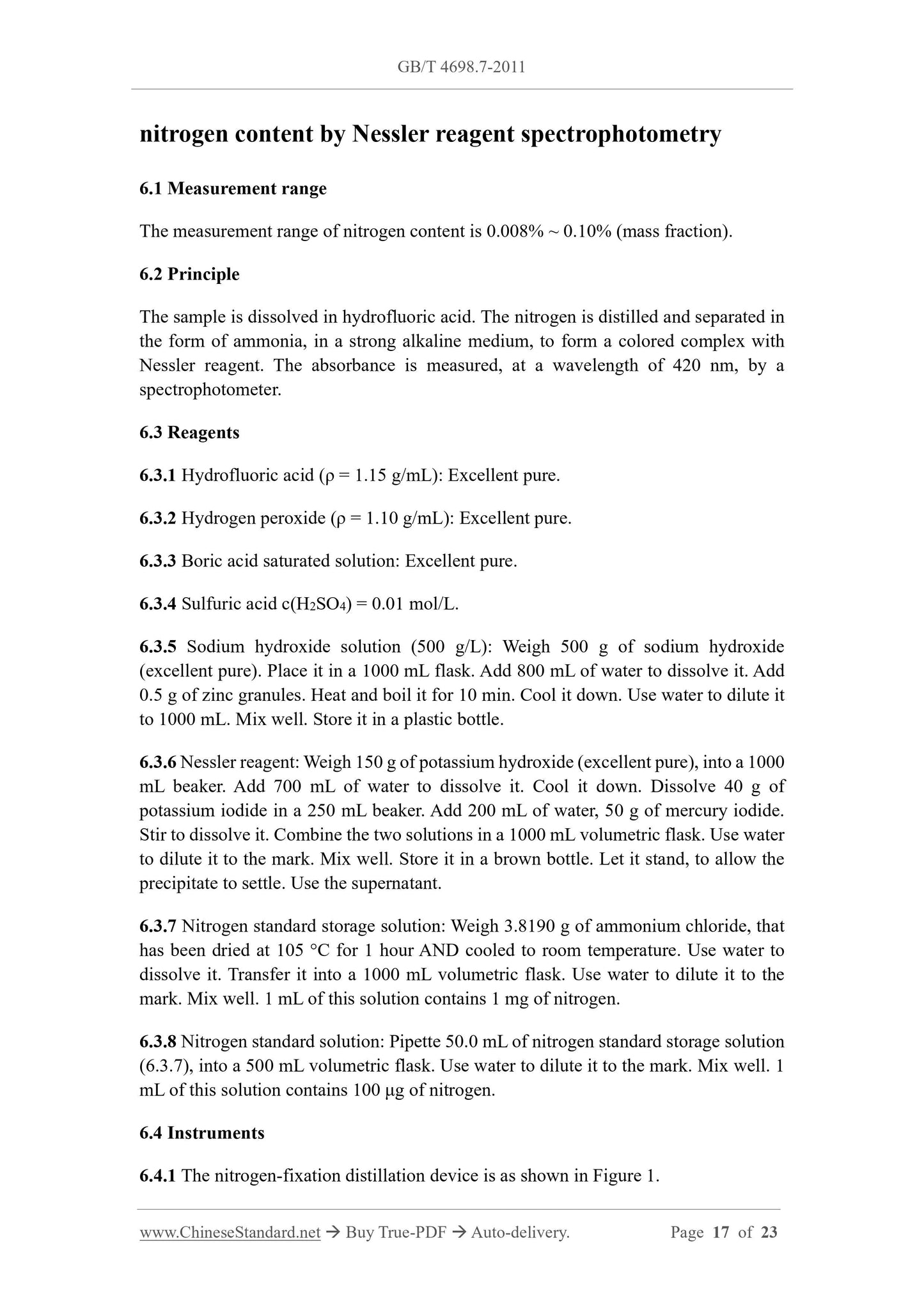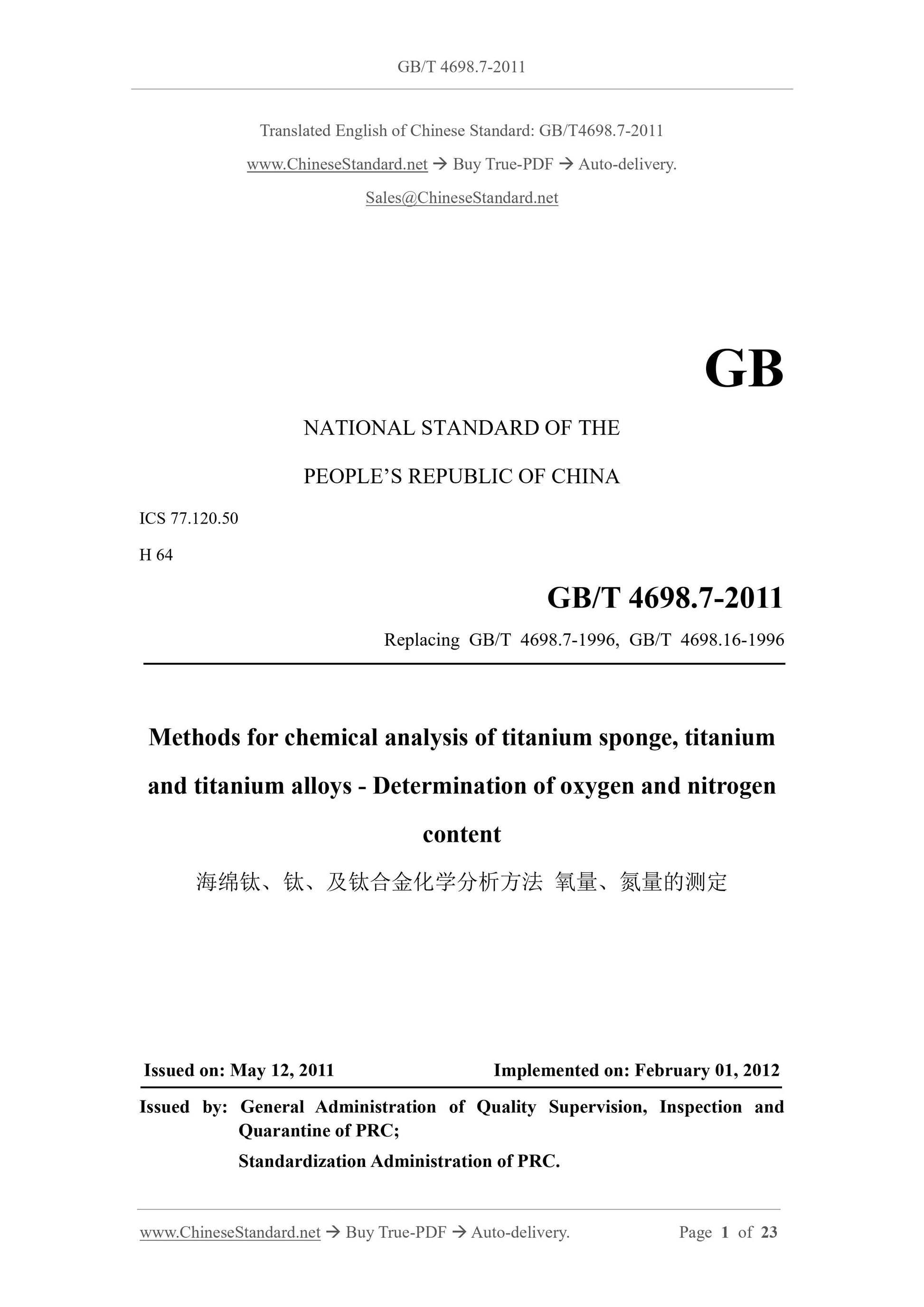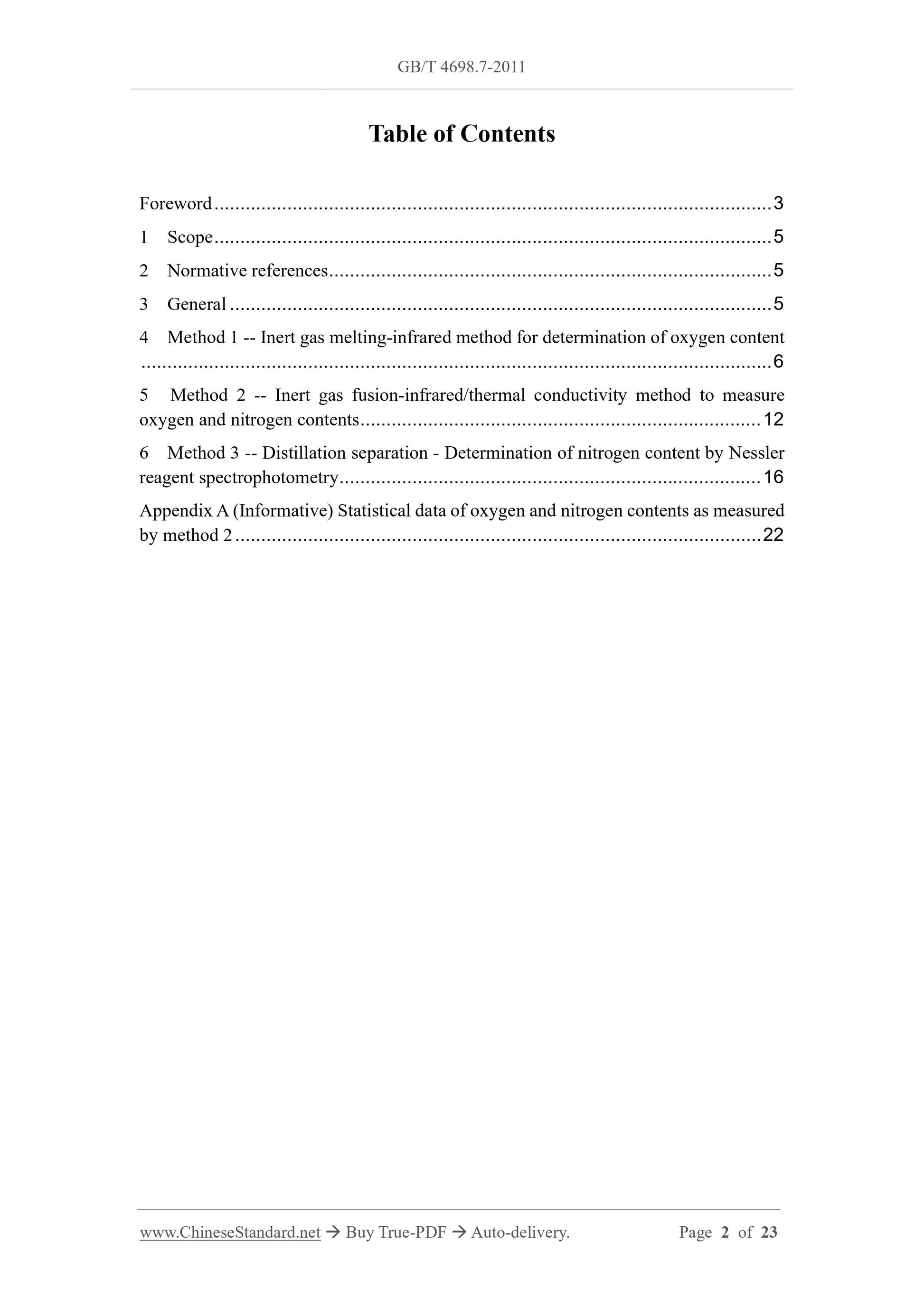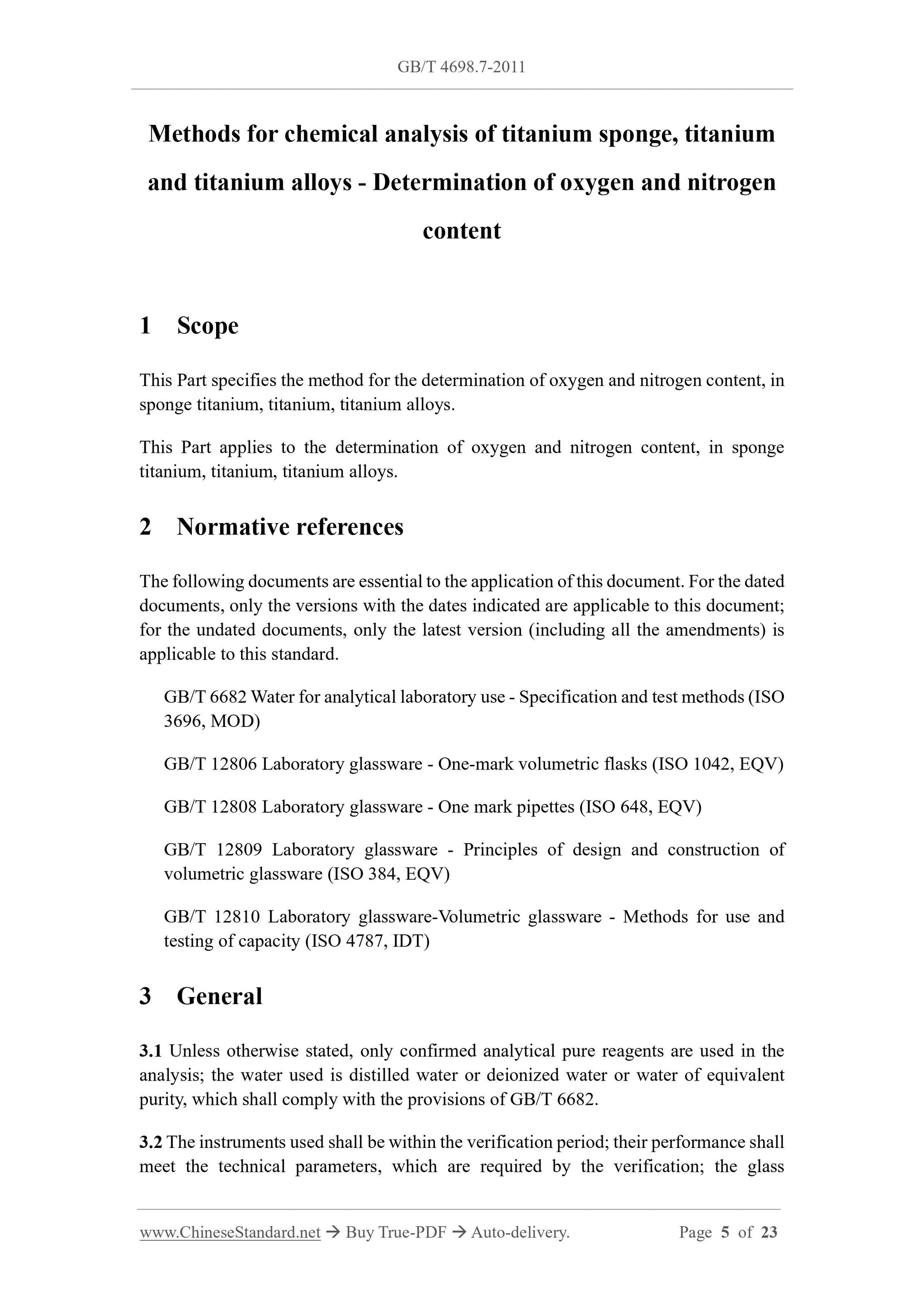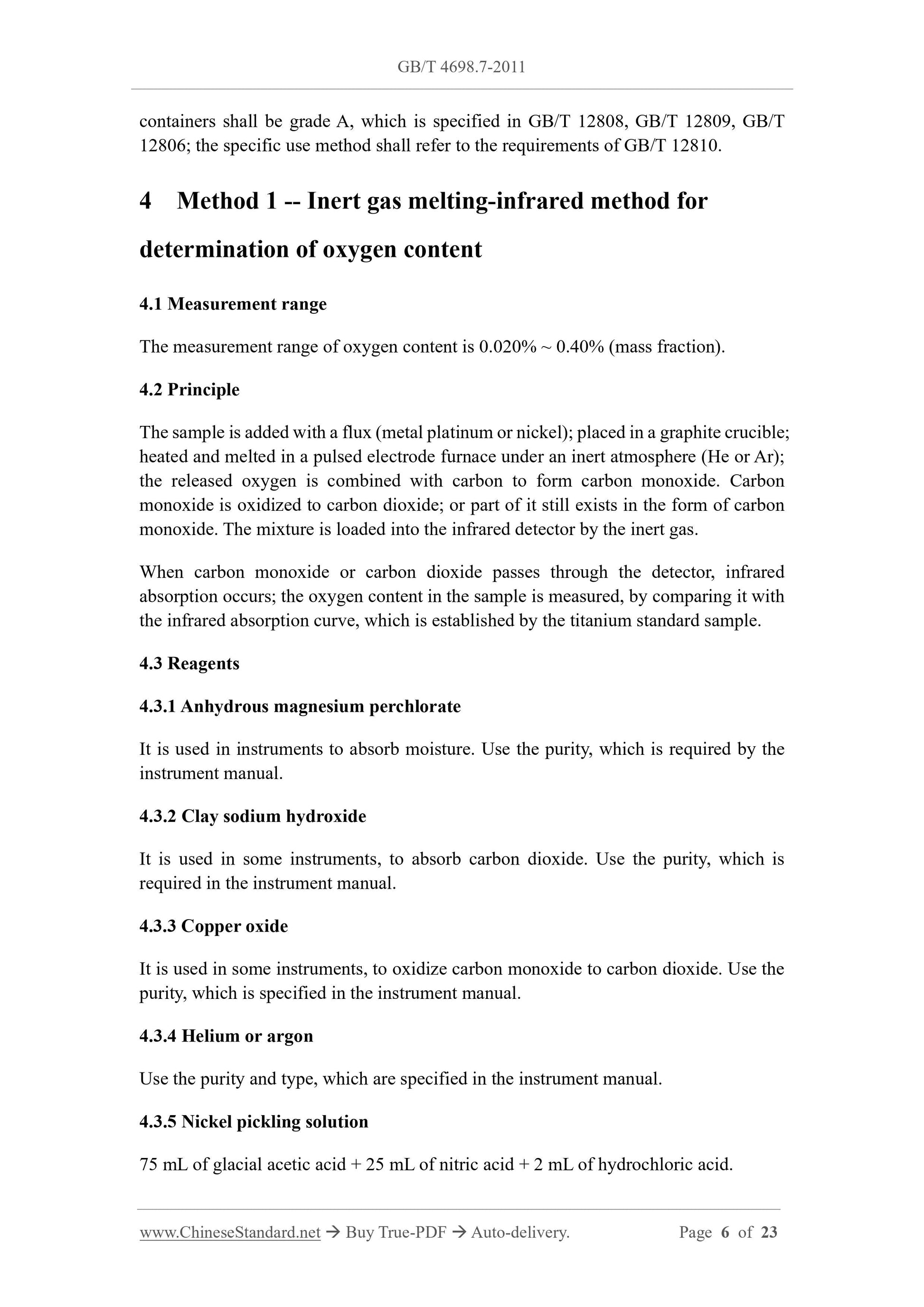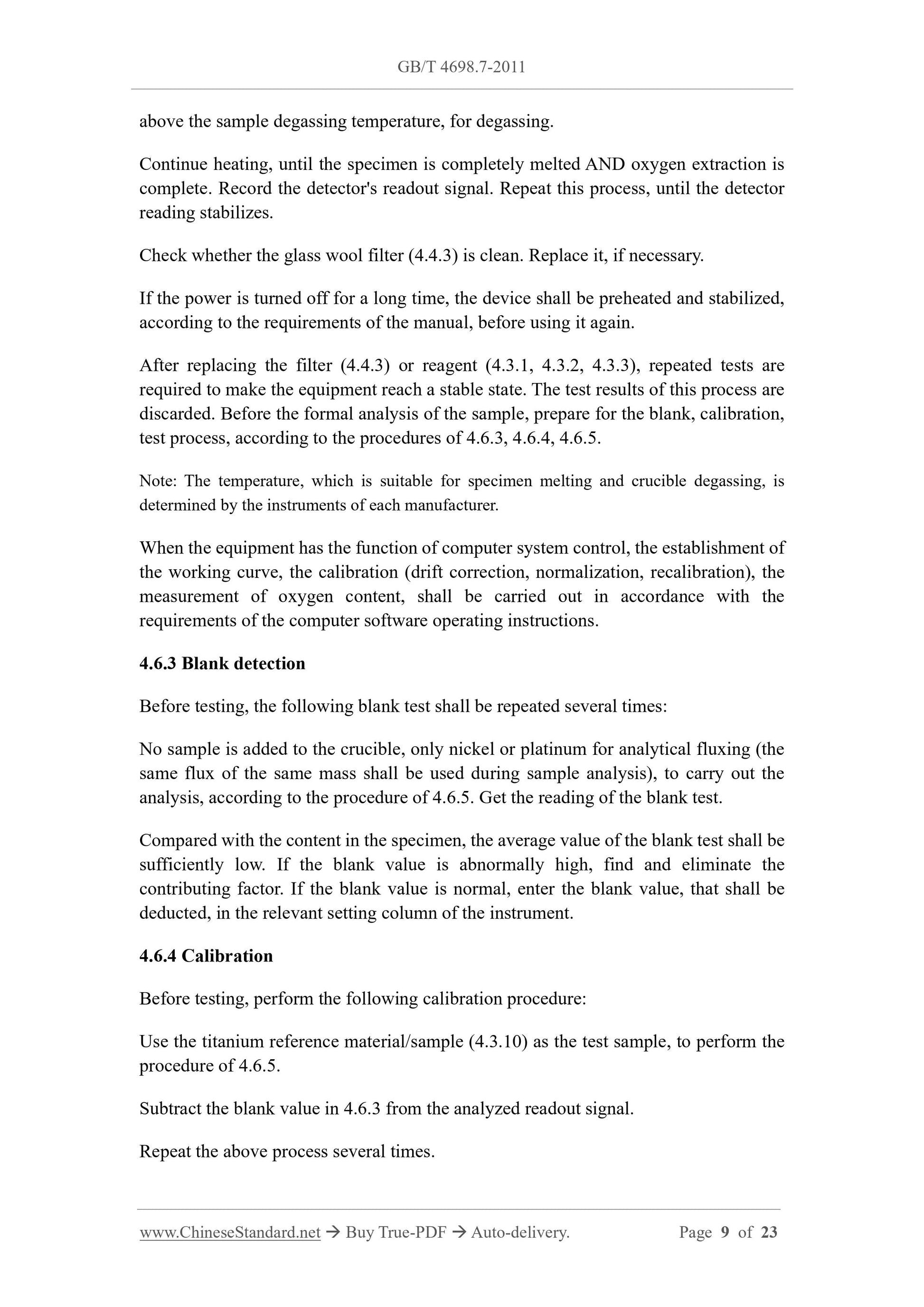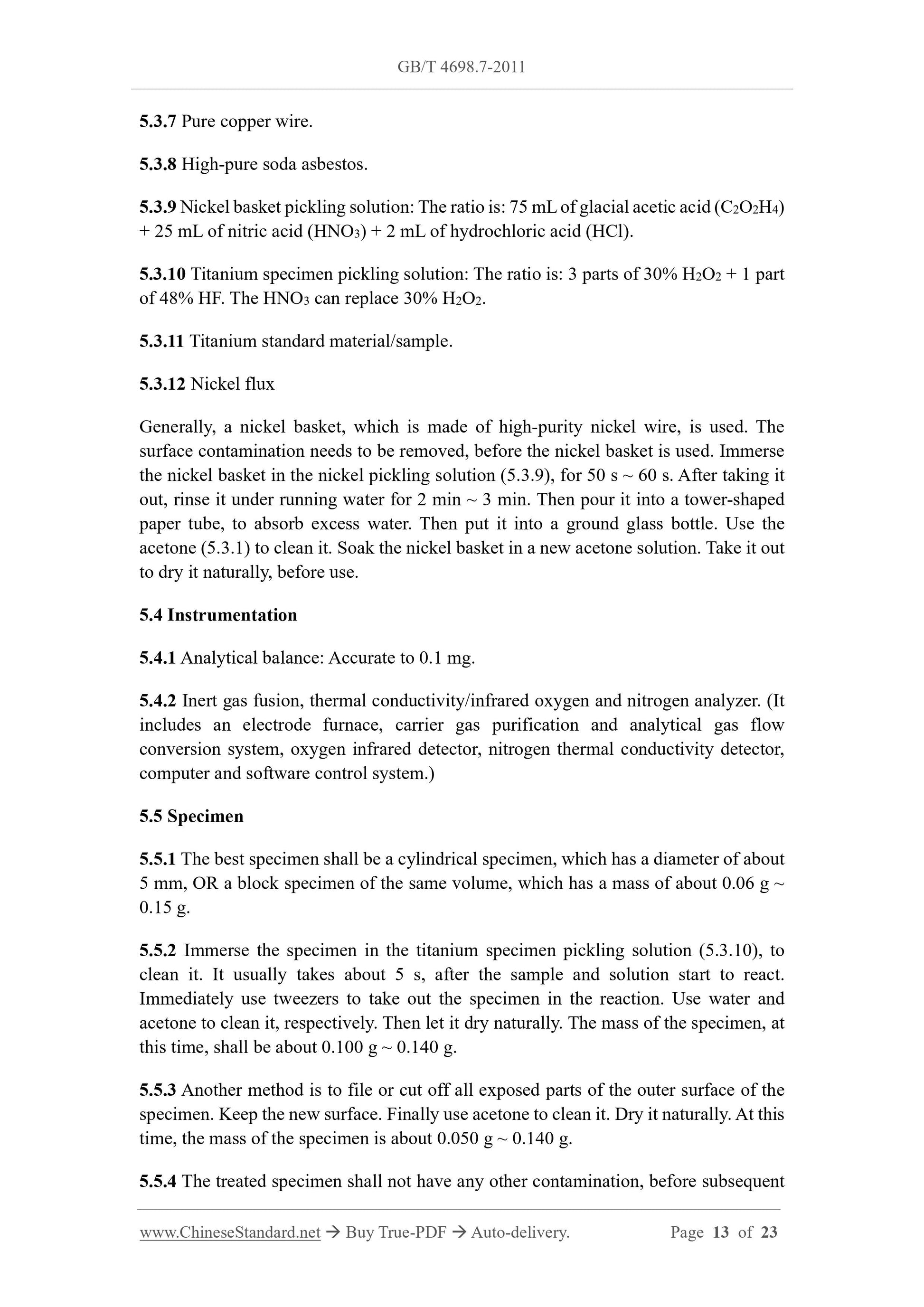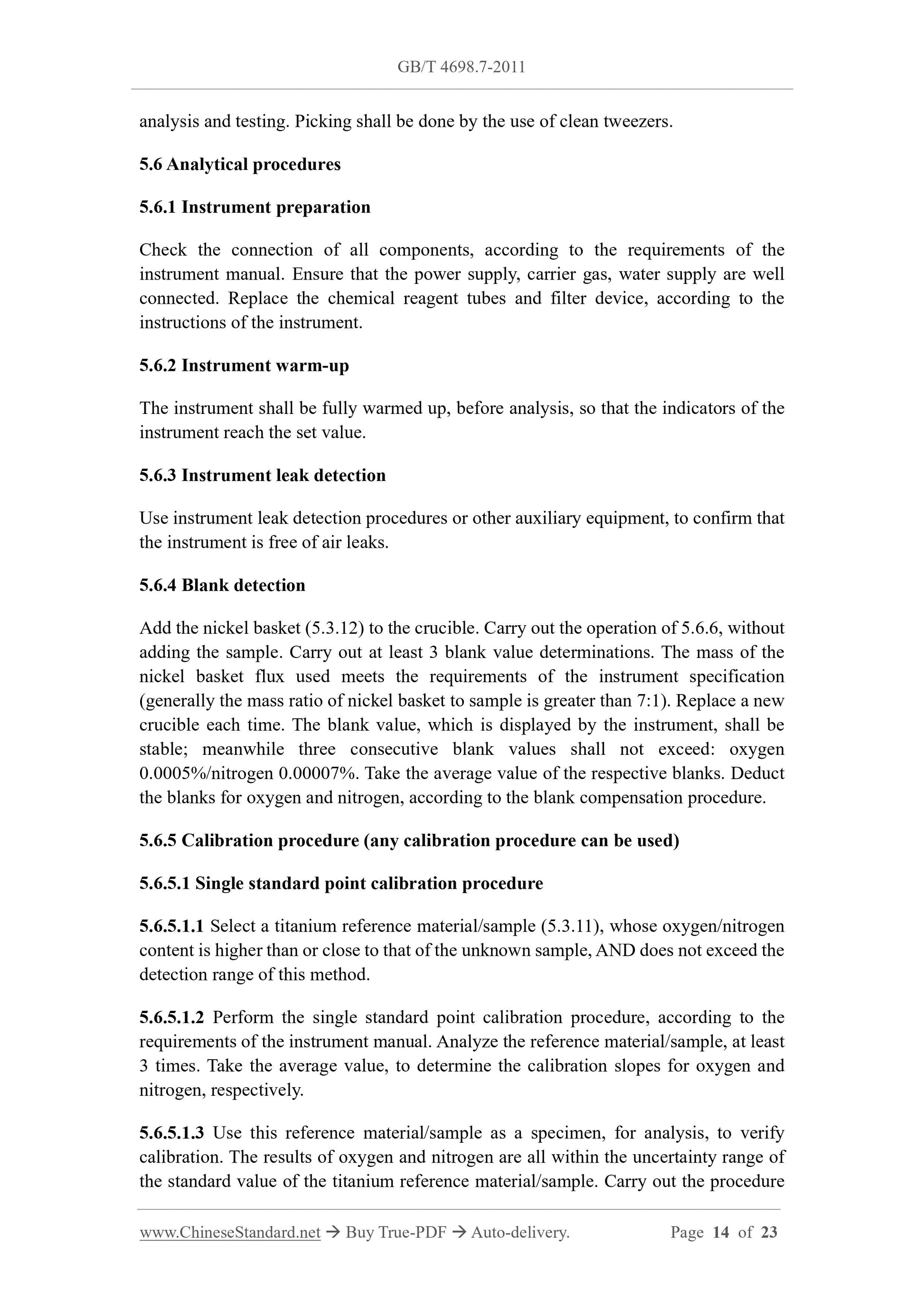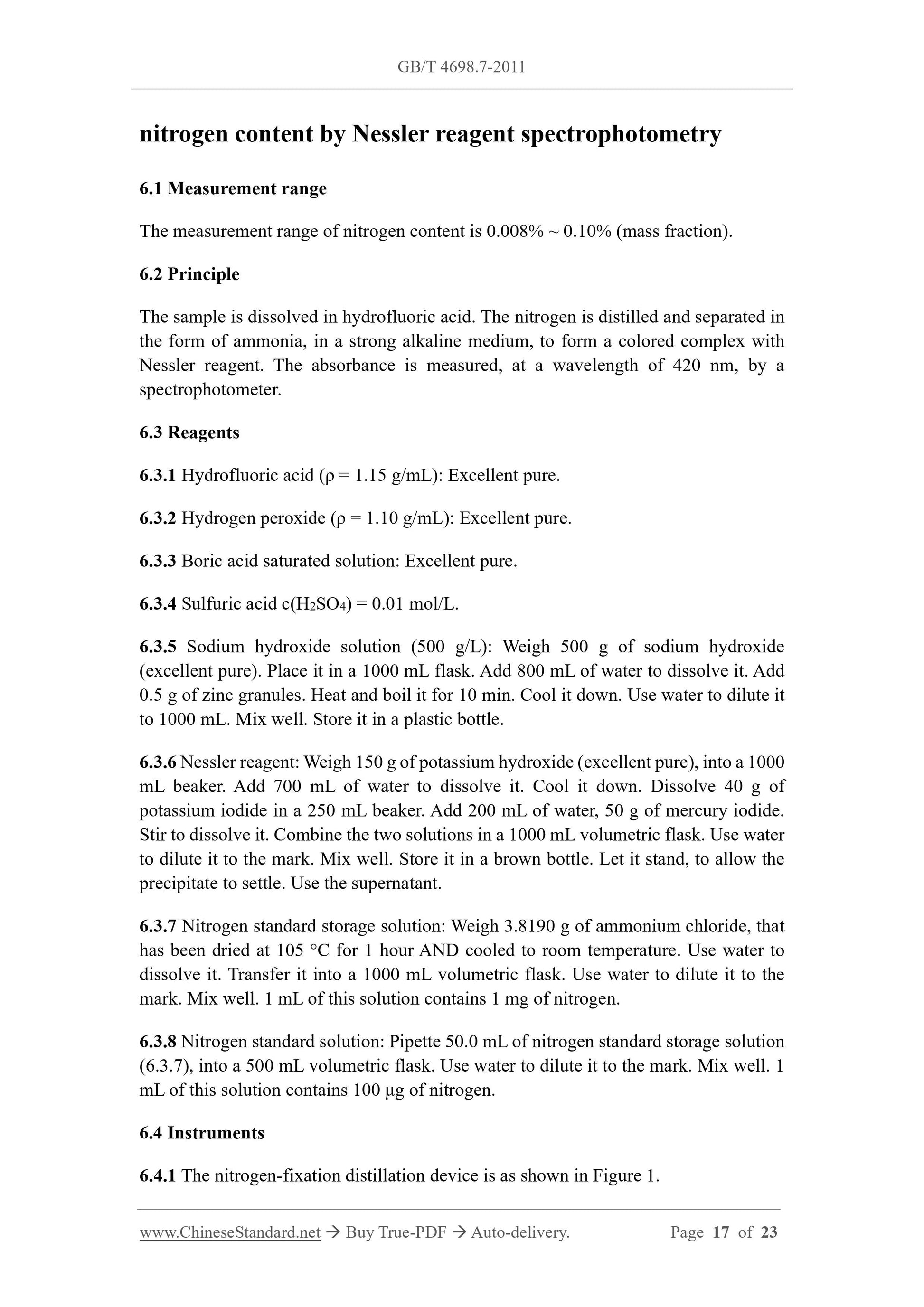1
/
of
9
www.ChineseStandard.us -- Field Test Asia Pte. Ltd.
GB/T 4698.7-2011 English PDF (GB/T4698.7-2011)
GB/T 4698.7-2011 English PDF (GB/T4698.7-2011)
Regular price
$260.00
Regular price
Sale price
$260.00
Unit price
/
per
Shipping calculated at checkout.
Couldn't load pickup availability
GB/T 4698.7-2011: Methods for chemical analysis of titanium sponge, titanium and titanium alloys -- Determination of oxygen and nitrogen content
Delivery: 9 seconds. Download (and Email) true-PDF + Invoice.Get Quotation: Click GB/T 4698.7-2011 (Self-service in 1-minute)
Newer / historical versions: GB/T 4698.7-2011
Preview True-PDF
Scope
This Part specifies the method for the determination of oxygen and nitrogen content, insponge titanium, titanium, titanium alloys.
This Part applies to the determination of oxygen and nitrogen content, in sponge
titanium, titanium, titanium alloys.
Basic Data
| Standard ID | GB/T 4698.7-2011 (GB/T4698.7-2011) |
| Description (Translated English) | Methods for chemical analysis of titanium sponge, titanium and titanium alloys -- Determination of oxygen and nitrogen content |
| Sector / Industry | National Standard (Recommended) |
| Classification of Chinese Standard | H64 |
| Classification of International Standard | 77.120.50 |
| Word Count Estimation | 17,184 |
| Date of Issue | 2011-05-12 |
| Date of Implementation | 2012-02-01 |
| Older Standard (superseded by this standard) | GB/T 4698.7-1996; GB/T 4698.16-1996 |
| Quoted Standard | GB/T 6682, GB/T 12806, GB/T 12808, GB/T 12809, GB/T 12810 |
| Adopted Standard | ISO 22963-2008, IDT |
| Regulation (derived from) | Announcement of Newly Approved National Standards No. 6 of 2011 |
| Issuing agency(ies) | General Administration of Quality Supervision, Inspection and Quarantine of the People's Republic of China, Standardization Administration of the People's Republic of China |
| Summary | This standard specifies the sponge titanium, titanium and titanium alloys in oxygen, nitrogen determination method. This section applies to sponge titanium, titanium and titanium alloys in oxygen, nitrogen content. |
Share
